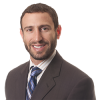Information contained in this publication is intended for informational purposes only and does not constitute legal advice or opinion, nor is it a substitute for the professional judgment of an attorney.
On April 14, 2020, the San Francisco Board of Supervisors, again, passed a public health emergency leave ordinance (the "PHELO"). The ordinance is very similar to the ordinance the Board passed exactly one week earlier, but contains changes—some expected, and some made during the Board's meeting. The ordinance now goes to the mayor for her signature. Below we summarize what changed in the last week since the Board originally passed the ordinance.
Covered Employees: Originally, the PHELO applied to any person, including part-time and temporary workers, who performed 56 or more hours of work in San Francisco during the 365 days immediately preceding the law's effective date. Now, the ordinance applies to any person providing labor or services for remuneration who is an employee under California law (the AB 5 standard, which creates a presumption that workers are employees), including part-time and temporary employees who perform work as an employee in San Francisco. In addition to certain welfare-to-work program participants, the amended PHELO says "employee" incudes one who performs limited work in San Francisco if the individual would be an employee under rules governing the pre-existing, separate Paid Sick Leave Ordinance (PSLO), i.e., employees who live in San Francisco and perform work for an employer from home, and employees who work outside San Francisco, but stop in San Francisco to work (e.g., to make pickups or deliveries). Moreover, these individuals are employees for all hours they perform in-San Francisco work, but, importantly, must perform 56 or more hours of work in San Francisco in a calendar year.
Leave Extends to Health Care Provider & Emergency Responder Employees: Originally, the PHELO said that employers of health care providers or emergency responders could elect to exclude entirely such employees from the law. However, the amended PHELO provides that these employers may elect to limit their employees' public health emergency leave, but at a minimum these employees may use leave if they are unable to work at their customary place of work or telework because either a health care provider advises them to self-quarantine, or they are experiencing symptoms associated with COVID-19, seeking a medical diagnosis, and do not meet the CDC guidance for criteria to return to work for healthcare personnel with confirmed or suspected COVID-19.
Leave Available Regardless of Whether and When Scheduled to Work: Originally, the PHELO said employers had to make leave available, regardless of whether or when an employee is scheduled to work. This standard remains in the amended PHELO, which, however, limits the total number of leave hours employees can take under these circumstances: the amount cannot exceed the average number of hours over a one-week period the employee was scheduled to work over the six-month period ending on February 25, 2020, including any leave hours they took.
Amount of PHEL: Originally, the PHELO used the federal Families First Coronavirus Response Act standards to determine the amount of leave employees must receive. However, as amended, full-time employees (as of February 25, 2020) receive 80 hours, and part-time employees (as of February 25, 2020) receive a number of hours equal to the average number of hours over a two-week period the employee was scheduled to work over the previous six months ending on February 25, 2020, including leave hours the employee took.
Next Steps: The amendments affect employers that had established policies, practices, and procedures based on the originally passed PHELO, and those that had not taken action to date. Unlike last week's Board meeting, where the Supervisors alluded that health care worker and emergency responder employee-related changes would be coming the week after, there was no discussion during Tuesday's meeting that the Board had plans to make further changes, big or small. Accordingly, this should be "it" until, of course, San Francisco's Office of Labor Standards Enforcement issues guidelines or rules implementing the ordinance once the mayor signs it.



